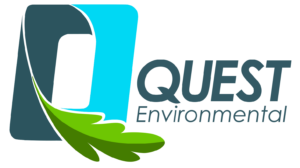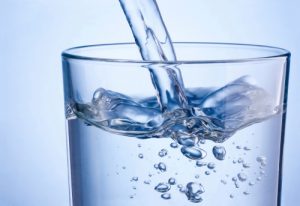Drinking Water: The United States Environmental Protection Agency (EPA) sets legal limits on over 90 contaminants in drinking water to optimally protect human health in line with current water technologies. QUEST has conducted sampling assessments of drinking water suitability per the EPA’s National Primary Drinking Water Regulations (NPDWRs or primary standards) in a variety of locations and facility types. The EPA identifies the following categories of drinking water contaminants:
- Physical contaminants primarily impact the physical appearance or other physical properties of water. Examples of physical contaminants are sediment or organic material suspended in drinking water or the water of lakes, rivers and streams from soil erosion or other contamination sources.
- Chemical contaminants are elements or compounds. These contaminants may be naturally occurring or man-made. Examples of chemical contaminants include nitrogen, bleach, salts, pesticides, metals, toxins produced by bacteria, and human or animal drugs.
- Biological contaminants are organisms in water. They are also referred to as microbes or microbiological contaminants. Examples of biological or microbial contaminants include bacteria, viruses, protozoan, and parasites.
- Radiological contaminants are chemical elements with an unbalanced number of protons and neutrons resulting in unstable atoms that can emit ionizing radiation. Examples of radiological contaminants include cesium, plutonium and uranium.
Groundwater: Besides feeding into streams and lakes, groundwater is often utilized for drinking water, livestock watering, and crop irrigation. QUEST would be pleased to design a sampling assessment to ensure that your groundwater quality is suitable for your purposes. If your property is on private well water, testing the water quality on a regular basis can provide the peace of mind of knowing your water source is safe and reliable. While public drinking water systems are regularly checked by experts, households on private wells must be proactive in maintaining the safety of their drinking water supplies. More information on groundwater basics can be found here.
Lead: Lead, which sometimes leaches into drinking water through plumbing materials, may cause significant adverse health impacts. For this reason, the EPA established a regulation known as the Lead and Copper Rule in 1991. Children represent the most vulnerable population when it comes to lead exposure, so schools and childcare facilities must be particularly vigilant, and the EPA has created technical guidance materials for the “3Ts” (Training, Testing, and Telling) to reduce lead in drinking water in schools. QUEST has been proud to provide lead in drinking water sampling assessment services for a number of Colorado school districts to ensure that their students have safe and healthy water.
Sewer Release: A sewer release occurs when there is a system flaw, a clog, or a capacity issue. If not promptly detected and remediated, health issues can arise from such an incident. The Institute of Inspection Cleaning and Restoration IICRC S500 defines sewage as “water containing urine and feces. It may also contain dangerous chemicals, medical wastes and physical hazards.” The IICRC categorizes water as clean (Category 1), gray (Category 2), or black (Category 3). Categories 2 and 3 are defined as follows:
- Category 2 water contains significant contamination and has the potential to cause discomfort or sickness if contacted or consumed by humans. Category 2 water can contain potentially unsafe levels of microorganisms or nutrients for microorganisms, as well as other organic or inorganic matter (chemical or biological). Examples could include discharge from dishwashers or washing machines, overflows from toilet bowls on the room side of the trap with some urine but no feces; broken aquariums, and punctured water beds. Category 2 water can deteriorate to Category 3. Once microbial organisms become wet from the water intrusion, depending upon the length of time that they remain wet and the temperature, they can begin to grow in numbers and can change the category of the water.
- Category 3 water is grossly contaminated and can contain pathogenic, toxigenic or other harmful agents. Examples of Category 3 water could include sewage, toilet backflows that originate from beyond the toilet trap regardless of visible content or color, seawater flooding, freshwater flooding from rivers or streams, and wind-driven rain from hurricanes or other weather-related events if they carry contaminants (e.g., silt, organic matter, pesticides, or toxic organic substances).
QUEST’s standard procedure for investigating a sewage release is to conduct a visual inspection, moisture meter survey, trace gas monitoring, and limited sampling to determine the extent of water damage and sewage overflow impacts. We then provide a recommended clean-up protocol suitable for the category of water released and tailored to the impacted site. After remediation is completed, we can conduct a post-remediation inspection and final clearance sampling to assess the adequacy of the remediation activities.


